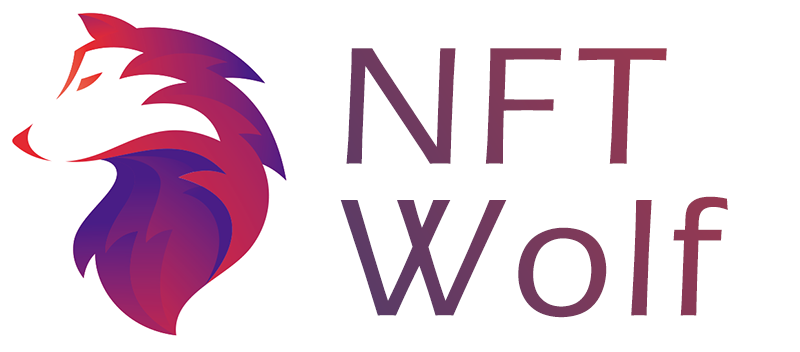NFTs, or non-fungible tokens, are a cryptocurrency similar to blockchain-based coins like Bitcoin or Ethereum. However, unlike those currencies, an NFT is an utterly unique asset and can’t be exchanged one for the other.
That’s why they’re called non-fungible because each and every NFT is unique. NFTs also have an artistic bent to them. Creators and artists can make their own NFTs and put them up for sale and auction.
A whole marketplace now exists that revolves around the trading, selling, and dealing of NFTs. One of the sites created around this market is called Foundation. Let’s take a deeper look at Foundation and what it’s all about.

What Is Foundation?
Foundation is one of the top NFT marketplaces. Think of it as an eBay-type site for selling and auctioning off NFTs. Users of the app bid on digital artwork and then display owned NFTs in a virtual gallery.
That’s not all. In addition to the gallery, NFT owners on Foundation have a collector profile as well. They can share NFTs on social media, sell them on the secondary market, or show off their art and its creator in any way they choose, from one convenient location.

Foundation describes itself as an app that closes the gap between crypto and culture to facilitate a network of support between NFT collectors, artists, and creators. Foundation strives to be easy to navigate.
How Does Foundation Work?
Foundation works through the auction process. Interested parties can bid on NFTs and then store them on the app. The NFTs can then be displayed however the purchaser decides to show them.
Foundation exists to facilitate the NFT buying process. It acts as an intermediary between the artist and the buyer, and it keeps a portion of the sale for doing so. Both creators and collectors need to set up a MetaMask wallet with ETH.
What Currencies Can You Use on Foundation?
Foundation only uses one payment method. It is built on Ethereum (ETH), a public blockchain network. It differs from Bitcoin because Bitcoin keeps track of currency ownership, while Ethereum is open access and provides data-friendly services regardless of background or location.
Ethereum is programmable, and you can use it for a lot of different digital assets. It works for more than payments, and it can’t steal your data and censor you.
Every interaction on a Foundation auction gets recorded on the Ethereum blockchain, and it’s used to pay creators as well as in auctions.
What Types of NFTs Can You Buy on Foundation?
Foundation supports both ERC-721 and ERC-1155 NFT token standards. It deals primarily in digital art by NFT artists. Every Foundation creator has their own page on the app. Also, every creator’s page shows the bidding history of every sold piece.
How Do You Buy an NFT on Foundation?
If you’re interested in buying an NFT on Foundation, first you need to set up a wallet and make sure you have enough ETH to bid. When creators decide to sell an NFT, they’ll set a reserve price, which must be met or exceeded during bidding.
Once the first bid occurs at the appropriate price, then the bidding officially begins. A countdown clock starts at 24 hours and ends when time runs out.
There are exceptions to the 24-hour rule. However, if a bid occurs in the last 15 minutes of the auction, the timer gets reset back to 15 minutes. This allows buyers to place final bids and for the artwork to reach its potential true value.
The extensions continue indefinitely until no bids occur during that final 15-minute time period.
To place a bid on Foundation, find an NFT you want to bid on and select the “place a bid” option. The bid must either meet or exceed the reserve price. If someone has already bid and the reserve price is already met, then the bid must exceed that price.
The next bid above the reserve price must beat the current bid by 10 percent or 0.1 ETH – depending on what costs less. After this, you need to confirm the transaction and pay a gas fee to finish the transaction.
You need to pay gas fees after every bid.
Once the transaction happens, funds get taken out of the wallet and placed in escrow on Foundation’s smart contract. Foundation does not have access to the funds at any time during the transaction – it’s simply a facilitator,
If you get outbid, the original funds get put back into your wallet. This doesn’t mean the transaction is over, however. If the auction hasn’t closed, you’ll have the opportunity to go back in and bid again.
Do You Need to Store Your NFTs? How Do You Do So?
When you win an auction on Foundation, you’ll need to settle the NFT. To settle, submit the transaction to the Ethereum blockchain. You need to do this ASAP after you win an auction.
Settling the transaction will remove the NFT from escrow and transfer it to the buyer’s wallet. This will also simultaneously pay the artist for their work.
Foundation uses IPFS (InterPlanetary File System) as a decentralized storage network for NFTs. The app says it uses this because it’s a “tamper-proof, canonical way to preserve media on the internet.”
Foundation provides an IPFS hash that gives access to the NFT art. It’s also available in the Foundation gallery and can be shared on social media. All artwork collected on Foundation exists independently of Foundation’s infrastructure and is always accessible.
How Do You Sell an NFT on Foundation?
Creators need an invitation to sell NFTs on Foundation. Once they do, they’ll have to set up a MetaMask wallet that has ETH in it. Once that’s done, creators then must create an artist profile.
After that, they can “mint” an NFT. To do so, they’ll need to upload a PNG, JPG., or video file to IPFS. Once that’s done, creators need to set a price for the NFT in ETH and finally put it up for auction on Foundation. All creators get 85 percent of the final sale price.
If the NFT ever gets resold on either Foundation or another platform, the wallet that originally minted the NFT receives a 10 percent royalty in perpetuity.
Selling Options on Foundation
Right now, creators can only sell NFTs on Foundation using Ethereum (ETH). Sellers simply set a reserve price, and once it’s met, the bidding automatically begins.
Foundation Fees
Let’s take a look at what Foundation charges to NFT creators and purchasers on the site.
For Foundation’s primary market, 85 percent of the full sale price of an NFT goes directly into the creator’s wallet. A 15 percent service fee is also charged and collected by Foundation for an initial sale.
For a secondary sale, Foundation collects 5 percent of the total sale price. Foundation doesn’t collect fees for transactions outside of the app.
All of the funds on Foundation get managed by smart contracts that exist on the ethereum blockchain. These are relatively easy to keep track of by using Etherscan.
You can also monitor transactions and fees under the “history” tab on an artwork page. Simply click the part of the page that says “view on Etherscan.” Buyers can use Etherscan to track all transactions on the Ethereum blockchain.
Etherscan is free to use and an easy way to keep track of all transactions on Foundation.
Is Foundation Safe to Use?
Foundation stores the NFTs on its platform on IPFS (InterPlanetary File System), and it doesn’t have access to any of the funds that get circulated during the buying and selling of NFTS.
It operates using the Ethereum blockchain and states that it exists simply to connect creators, artists, and buyers in one place. For doing this, Foundation app collects a fee.
Foundation respects intellectual property and asks that its users do the same. Foundation said it will process and investigate infringement issues and take appropriate actions under the “Digital Millennium Copyright Act (“DMCA”) and other applicable intellectual property laws with respect to any alleged or actual infringement.”
Foundation does not get involved in disputes between users.
Pros and Cons of Foundation
Pros of Using Foundation
- Ease of use
- Everything in one place
- Streamlined process
- Transparency
- Everything handled (bidding, storage, payment) in one application
- Artist Profiles
- Everything handled using ETH
- Easy auction process
Cons of Using Foundation
- Fee for selling using the platform
- NFTs can only be purchased using ETH
- No Bitcoin
Frequently Asked Questions
How much does it cost to mint an NFT on Foundation?
Foundation doesn’t charge a mint, but there are fees involved with doing so. Let’s walk through the process.
Minting is how someone makes sure a digital artwork becomes part of the Ethereum blockchain, which is tamper-proof and unchangeable. Digital artworks or NFTs need to be minted the same way coins do.
Once the NFT is “signed,” it’s permanently linked to your unique address and wallet. However, before it can be minted, a “gas fee” needs to be approved in the wallet to complete the process.
Gas fees are what it costs to interact with the Ethereum blockchain, and they’re not collected or created by Foundation. If the Ethereum network is congested, gas can be expensive.
The gas fee is determined by how fast you want to complete the transaction and how busy the network is when you request. If gas prices are too high, you can always wait until they go down.
There’s also the option of submitting a price and waiting for the network to process it. Current gas prices are available here.
How do you get invited to Foundation?
To join Foundation as a creator, you need to be invited by a current one. One way for that to happen is by joining the Foundation Community Upvote.
To join the Community Upvote, potential creators need to:
- Create their Foundation profile
- Complete things like writing a bio, adding a cover photo and profile image on the profile
- Verify social media accounts like Instagram and Twitter
- Add links to personal websites and portfolios to show context for the work
There’s also some campaigning involved. Artists who want to get invited to the platform aren’t discovered by just sitting and waiting. They utilize social media accounts like Twitter to show off artwork and let the community know they’re looking for an invite.
Once the community picks a creator through the upvote process, Foundation will alert the potential member through email about the following steps to participating in the minting process.
Foundation said that the interest level for joining as a creator is very high. It uses the invite system to “empower artists in helping us to decide who joins next.”
There are also other ways to potentially get invited to join the platform.
A potential Foundation creator could also buy a Foundation App invite from a stranger on eBay. These invites can be as much as $1,000. Be cautious, however, because there are scammers looking to cash in on the interest in joining Foundation.
Other people will ask for bids on their NFTs on the platform in exchange for an invite. Still, others have created pay-it-forward invite chain communities that share invite codes with several people.
With some persistence and a little luck, you’ll be sharing your own NFT on Foundation very soon.
How do Foundation invites work?
Once you sell your first NFT on the platform, you’ll get access to a creator invites feature. Foundation encourages people to invite artists they want to personally share the platform with.
These invited artists will always be connected to the artists that invited them and will be visible on those artists’ profile pages.
Foundation said this system allows artists to support other artists directly and puts the platform’s power in the hands of Foundation creators.

